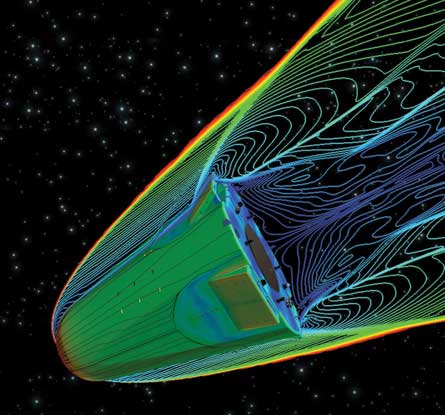Dan Thisdell/London
The European Space Agency's focus on re-entry from low-Earth orbit goes beyond its flagship IXV project. Scheduled to fly in spring 2012 is Expert - the European Experimental Re-entry Testbed - and the agency is also working on concepts for cargo return based on the success it has had with its Automated Transfer Vehicle robotic supply ships, currently a key lifeline to the International Space Station but incapable of surviving re-entry.
Next spring, the blunt-nosed Expert capsule will be shot up to the edge of space on a Russian Volna sea-launched rocket. Its 15min flight, including 5km/s re-entry, will test experimental side flaps, a technology that may influence the final design of the IXV. In June, a ceramic flap and array of sensors and instruments, identical to the flight version, was tested to 1,200˚C in an M7 plasma flow at Italy's Scirocco plasma wind tunnel in Capua, near Naples, one of just a few facilities worldwide capable of such testing.
© ESA |
Going ballistic, with guidance |
Lessons from the 1998 flight of the conical capsule-shaped Atmospheric Re-entry demonstrator and the ATV programme are inspiring efforts to devise a cargo return capability. ATV, the largest orbiting vehicle after the Space Shuttle, can deliver 6.6 tonnes to the International Space Station, and ESA believes a re-entry capable capsule could be spaceworthy by 2015. Further development of such an Advanced Re-entry Vehicle could provide transportation for four astronauts by 2020.
Source: Flight International



























